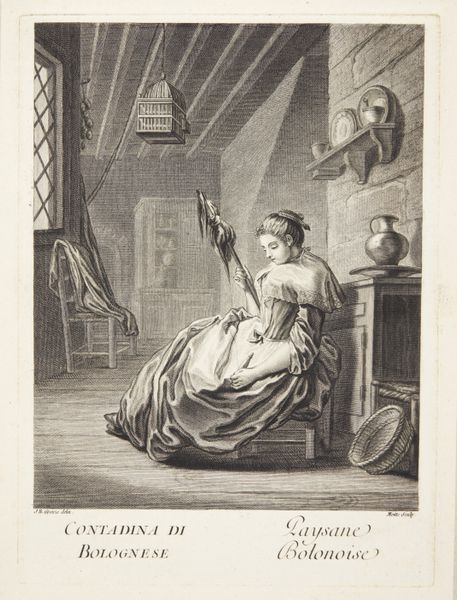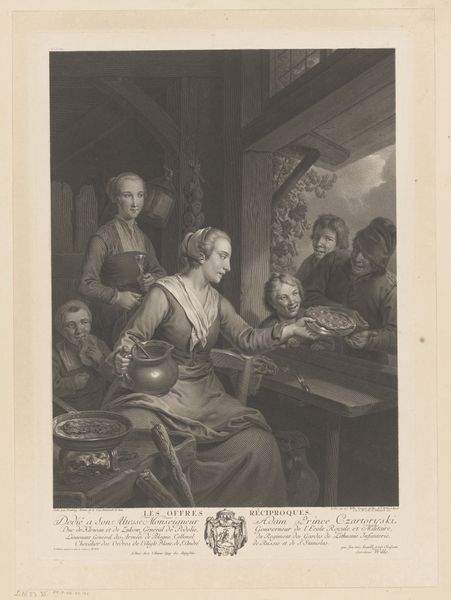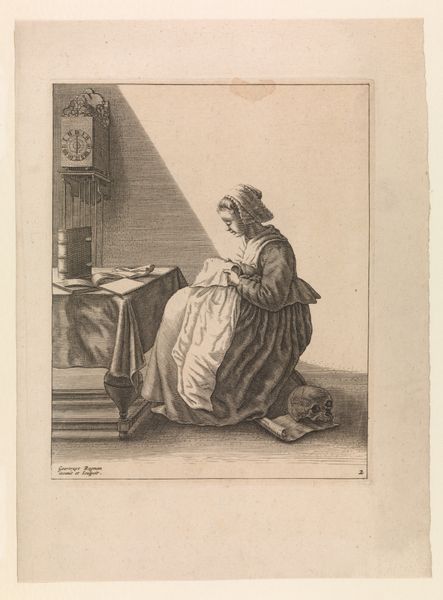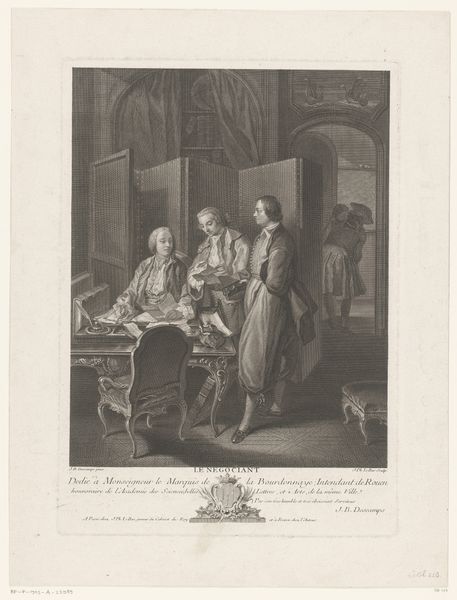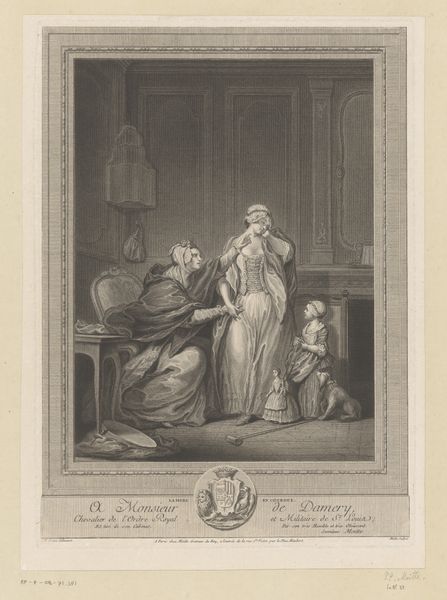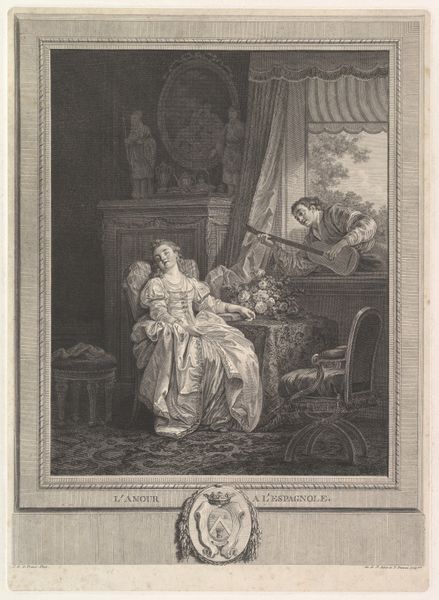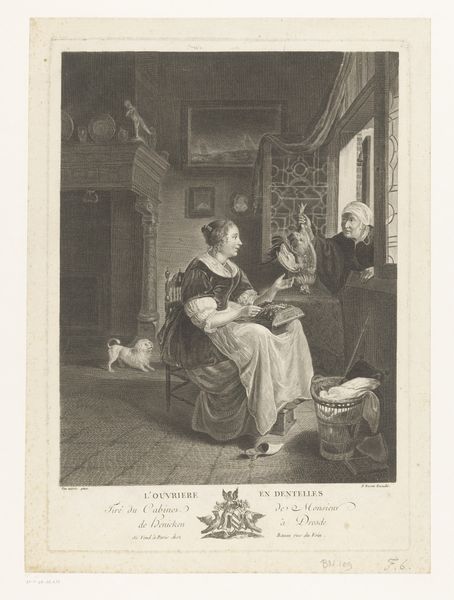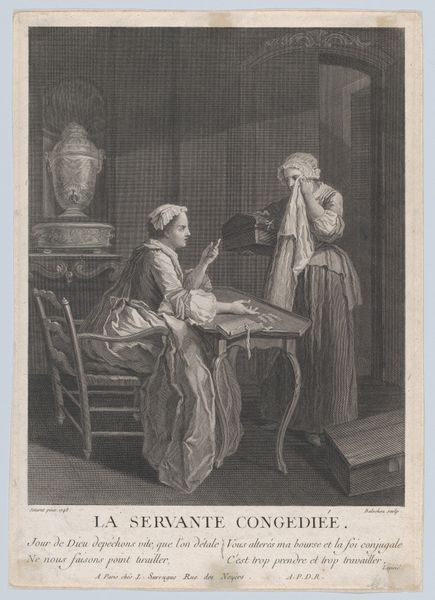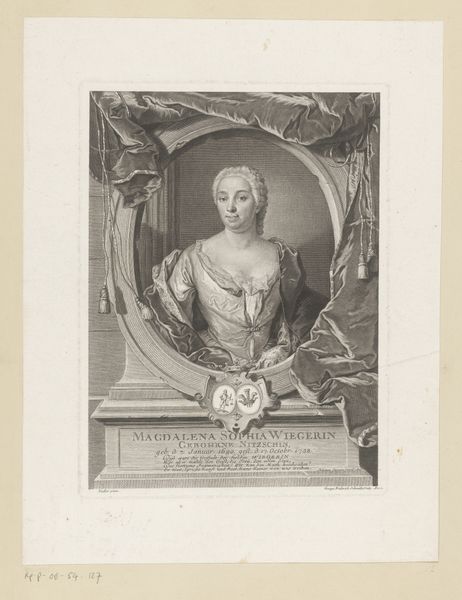
drawing, print, etching
#
portrait
#
drawing
#
baroque
# print
#
etching
#
genre-painting
Dimensions: Sheet: 12 1/16 x 8 3/4 in. (30.7 x 22.3 cm) Plate: 10 13/16 x 7 1/2 in. (27.5 x 19 cm)
Copyright: Public Domain
Editor: Here we have Louis Surugue’s “Young Woman Chopping Onions,” a print made in 1724, currently at the Metropolitan Museum of Art. I find the interplay of light and shadow in this etching really captivating, almost theatrical. What strikes you most about this work? Curator: Certainly. One might consider how Surugue masterfully employs the etching technique to define the textures within the composition. Observe how line and value contour to create the illusion of form and depth. For example, the coarse weave of the basket containing the onions, in contrast with the smooth skin of the young woman’s face. Do you see that? Editor: I do! It's incredible how he distinguishes the textures with such fine lines. But what about the secondary figure, the man peeking from behind? Does that not factor significantly into a reading of this work? Curator: Indeed, we see a play of visual elements at work. The contrast between the figure's engaged expression and the still life elements—the bird hanging in the background—enhances the composition. Semiotically, what interpretations might we draw from this opposition, particularly in the broader context of Baroque sensibilities regarding depictions of daily life? Editor: Hmm, so the tension isn’t necessarily in the narrative of who these people are or their context, but in how different visual components relate to and modify each other? That’s very helpful, thank you. Curator: Precisely. Examining the internal structure of the work reveals much about its aesthetic intentions, without requiring historical narratives. It shows us how an artwork functions as a cohesive whole.
Comments
No comments
Be the first to comment and join the conversation on the ultimate creative platform.
